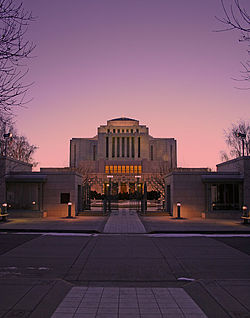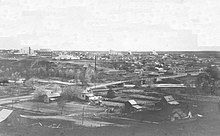
Magrath is a town in Cardston County, Alberta, Canada. Its population was 2,481 in 2021. Magrath is 32 km (20 mi) south of Lethbridge and 242 km (150 mi) south of Calgary.

Milk River is a town in Alberta, Canada that is named after the Milk River which flows immediately to its south. This location results in Milk River being one of the few Canadian communities within the Mississippi River drainage system. It is 70 kilometres (43 mi) south of Lethbridge, and 16 kilometres (9.9 mi) from the Canada–United States border. It is primarily a service centre for the many farms and cattle ranches which surround it.

Hanna is a town in Central Alberta, Canada.

Oyen is a town in east-central Alberta, Canada near the Saskatchewan boundary and north of Medicine Hat. It is on Highway 41, 4 km (2.5 mi) south of its junction with Highway 9.

Olds is a town in central Alberta, Canada within Mountain View County and the Calgary–Edmonton Corridor. It is approximately 61 km (38 mi) south of Red Deer and 90 km (56 mi) north of Calgary. The nearest towns are Didsbury to the south, Bowden to the north, Sundre to the west and Three Hills to the east. Olds is located at the intersection of Highway 27 and Highway 2A, 5 km (3.1 mi) west of the Queen Elizabeth II Highway. The Canadian Pacific Kansas City's main Edmonton-Calgary line runs through the town.

Beaumont is a city in Leduc County within the Edmonton Metropolitan Region of Alberta, Canada. It is located at the intersection of Highway 625 and Highway 814, adjacent to the City of Edmonton and 6.0 kilometres (3.7 mi) northeast of the City of Leduc. The Nisku Industrial Park and the Edmonton International Airport are located 4.0 kilometres (2.5 mi) to the west and 8.0 kilometres (5.0 mi) to the southwest respectively.

Vauxhall is a town in southern Alberta, Canada that is surrounded by the Municipal District of Taber. It is on Highway 36 approximately 36 km (22 mi) north of Taber, 69 km (43 mi) south of Brooks and 114 km (71 mi) west of Medicine Hat. It is situated in the prairie land between Bow River and Oldman River.
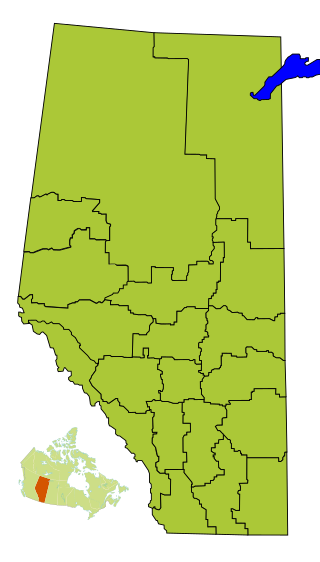
Division No. 3 is a census division in Alberta, Canada. It is located in the southwest corner of southern Alberta and its largest urban community is the Town of Claresholm.

Grande Cache is a hamlet in West-Central Alberta, Canada within and administered by the Municipal District of Greenview No. 16. It is located on Highway 40 approximately 145 kilometres (90 mi) northwest of Hinton and 435 kilometres (270 mi) west of Edmonton. Grande Cache overlooks the Smoky River, is at the northern edge of Alberta's Rockies, and serves as a gateway to the Willmore Wilderness Park. The hamlet held town status prior to 2019.

Rainbow Lake is a town in northwest Alberta, Canada. It is west of High Level at the end of Highway 58, in Mackenzie County.
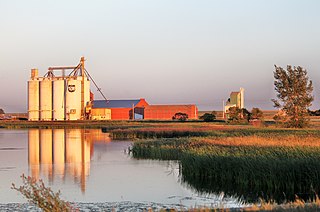
Raymond is a town in southern Alberta, Canada that is surrounded by the County of Warner No. 5. It is south of Lethbridge at the junction of Highway 52 and Highway 845. Raymond is known for its annual rodeo during the first week of July and the large population of members of the Church of Jesus Christ of Latter-day Saints. Raymond is also significant for its connection to the history of the Japanese experience in Alberta. The town has a rich history in high school sports, basketball, Canadian football, Judo and women's rugby. Raymond was recently mentioned as one of the first communities in Alberta to become a net-zero solar-powered community, after having installed solar panels on most town buildings.

Stavely is a town in southern Alberta, Canada. It is located 110 kilometres (68 mi) south of Calgary on Highway 2 and 16 km (9.9 mi) east of Willow Creek Provincial Park.
Barnwell is a village in southern Alberta, Canada. It is located 10 km (6.2 mi) west of Taber and 43 km (27 mi) east of Lethbridge on Highway 3, in the Municipal District of Taber.
Glenwood is a village in southern Alberta, Canada. It is located north of the Town of Cardston, in Cardston County. The village was named for a man named Edward Glen Wood. The founder of the village was Edward J. Wood, successor to Latter Day Saint leader Charles Ora Card, the founder of Cardston. Both Glen and Edward Wood were from Salt Lake City, Utah, and are buried in Cardston. The old name for the village was Glenwoodville until 1979.
Hill Spring is a village in southern Alberta, Canada. It is located 32 km (20 mi) west of Cardston and 43 km (27 mi) southeast of Pincher Creek, in the foothills of the Canadian Rockies.

Cardston County is a municipal district in southern Alberta, Canada. It is located in Census Division 3 around the Town of Cardston.
Woolford is a hamlet in southern Alberta, Canada within Cardston County. It is located on Highway 503, approximately 16 kilometres (9.9 mi) southeast of Cardston between the St. Mary River and the Milk River Ridge. It is named after Thomas Woolford who came to the area in 1900.
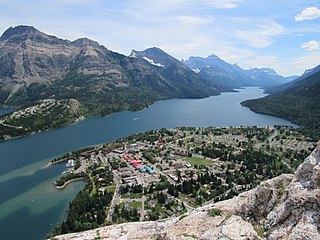
Waterton Park, commonly referred to as Waterton, is a hamlet in southwestern Alberta, Canada within Improvement District No. 4 Waterton.
Mountain View is a hamlet in Alberta, Canada within Cardston County. It is located along Highway 5 approximately 25 kilometres (16 mi) west of Cardston and 20 kilometres (12 mi) east of Waterton Lakes National Park near the United States border. It is also a kickoff point for visitors to Police Outpost Provincial Park, 18 kilometers to the south.
Aetna is a hamlet in southern Alberta, Canada within Cardston County, located 2 kilometres (1.2 mi) east of Highway 2, approximately 70 kilometres (43 mi) southwest of Lethbridge.
